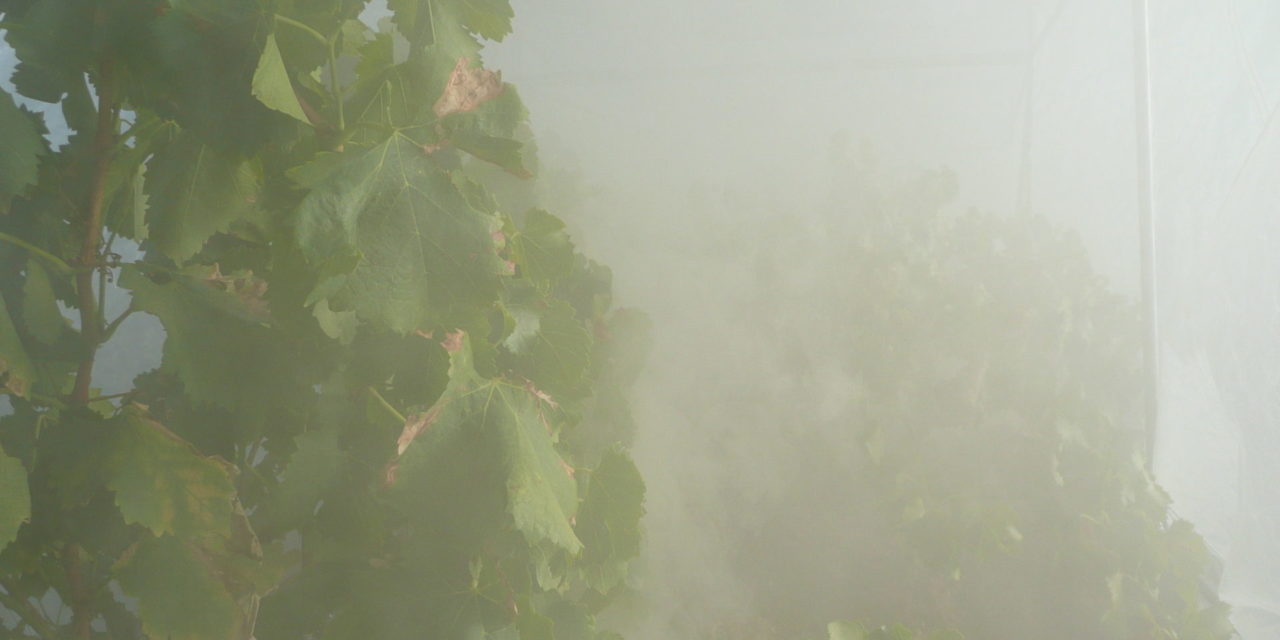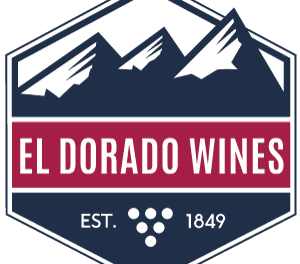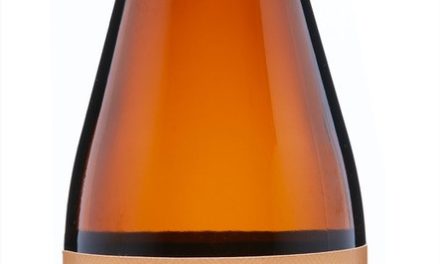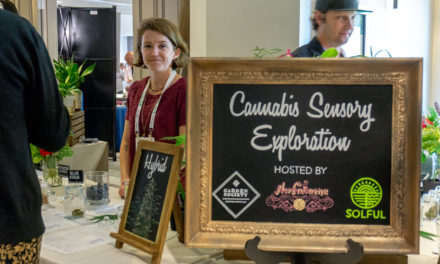Those who live in wildfire-prone areas across the globe may have heard the term “smoke taint” bandied about after blazes have encroached on winegrape growing areas. But what is smoke taint and what does it mean to the industry?
“A wine is tainted when something from outside of what would have been naturally present in the wine overpowers the wine, making it one-dimensional and decreasing its quality,” explains Anita Oberholster, associate cooperative extension specialist in enology in the Department of Viticulture and Enology at University of California Davis.
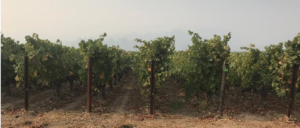
[Photo courtesy Anita Oberholster]
Opinions diverge widely as to how pervasive smoke taint might be across any given vintage, but it’s safe to say the issue affects wine producers more than consumers, according to Matthew Noestheden, director of operations for Supra Research and Development, the only company in Canada to offer smoke taint testing. He says it’s “tricky” to pick out some smoke-tainted wines, as they can be similar to heavily oaked wines.
“Smokiness, in itself, doesn’t indicate a taint, as some barrels can give that character, if that’s the wine style the winemaker is looking for,” says Oberholster. “It’s really that retronasal perception that characterizes smoke taint.”
Other hallmarks, says Noestheden, are cold ash or a “distinct back of the throat” sensation akin to licking a campfire. Notes may also include burnt rubber or bacon. The wine will also lack varietal character.

“It’s not an easy thing to determine whether or not a heavily smoke-exposed grape is going to make good wine. That’s the nature of this beast.” —Matthew Noestheden, Supra Research and Development
It’s also true that smoke in a vineyard doesn’t guarantee the grapes will develop smoke taint. Researchers are working to not only determine the constituents of smoke taint, but also which varieties are most susceptible to smoke taint—and under what circumstances. Grapes are most susceptible for the two to three weeks between the onset of full verasion until after color change, says Noestheden, and, “unfortunately, that corresponds with forest fire season in many grape-growing regions.”
In three of the last five years, for example, growers in British Columbia’s South Okanagan Valley have had issues with smoke from Washington state wildfires. Chile, South Africa, Australia, even Spain and Portugal, have had smoke taint challenges. However, damage has been most pronounced in New World regions. (Note: In February, it was announced that nearly all of the 2020 harvest would be scrapped in Australia’s Hunter Valley, Adelaide Hills, and Kangaroo Island wine regions, due to effects of the devastating 2019-2020 bush fires.)
Since the volatile phenols responsible for the off taste aren’t invisible to the naked eye, “The science defining what grape is going to yield a bad wine hasn’t been established for every grape-growing region,” says Noestheden. There are regional differences between the chemical constituents of untainted fruit, he explains, which necessitates obtaining clear chemical baselines across a region by variety. Even with that information, “It’s not easy to determine whether a heavily smoke-exposed grape is not going to make good or tainted wine. That’s the nature of this beast.”
Is it a myth?
“Nobody really wants to admit they have smoke taint,” says Jessica Smith, director of domestic operations for ConeTech, an alcohol and flavor management technology provider. The company had recently announced its proprietary solution for smoke taint when the 2017 fires occurred in and around Northern California’s Wine Country. The common response from wineries at the time was, “No problem.” A year or two later, she says, some of the producers who had previously stated they didn’t have a problem contacted ConeTech for help. “It’s something nobody wants to talk about. But if they aren’t treating their wine, they’re [filing insurance claims].”
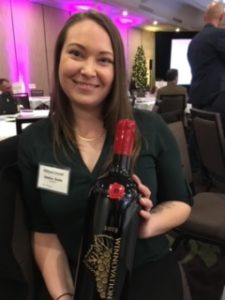
“[Smoke taint is] something nobody wants to talk about. But if they aren’t treating, they’re filing insurance claims.” —Jessica Smith, ConeTech
ETS Laboratories senior scientists pointedly refer to the issue as “smoke impact” rather than “taint,” saying that the characteristics “aren’t necessarily exclusively negative.”
When wood burns, it produces volatile phenols—the molecules that give smoke its odor. Grapes exposed to smoke absorb these volatile phenols. “Then, something fascinating happens: Live grapes bind a large part of these volatile phenols to a variety of sugars, making them odorless,” explains Dr. Eric Herve, research scientist at ETS Laboratories in St. Helena, Calif. During fermentation, yeast breaks down part of the sugar-phenol bond, “releasing a portion of the phenols, which causes smoke odors and flavors in wine.”
Despite agreement that the problem is very real, Herve contends, “the incidence and extent has been vastly exaggerated in the press.”
The extent of the damage is difficult to quantify given the cone of silence surrounding the issue, but it seems most prominent across western North American grape-growing regions as well as Australia and Chile, which have also been hit hard by wildfire. One wine trade organization called smoke taint “a sensitive and unfortunate topic,” before adding that it has no hard data on acres or tons impacted.
How widespread is the problem?
Researchers at Sonoma State University in Sonoma County, Calif., are working on an economic analysis, says Oberholster. Initial findings indicate there’s not an overall significant impact, but this may be because the areas most significantly affected produce only a small percentage of the global grape and wine output. But these areas also produce among the most expensive grapes and wine worldwide and have the greatest amount of economic activity.
Among the wineries currently embroiled in legal battles regarding smoke damage are Kunde Enterprises and Vintage Wine Estates, which filed a $19 million lawsuit in Sonoma County in 2019 against seven insurance companies for unpaid claims related to the 2017 fires; Westside Winery of Healdsburg, Calif., brought suit against a distributor that rejected 5,000 cases of wine, valued at $400,000, alleging it was smoke tainted; and still other litigation is continuing to come forward.
Testing for smoke taint

“The incidence and extent [of smoke impact] has been vastly exaggerated in the press.” —Dr. Eric Herve, ETS Laboratories
Most often, such tests look at guaiacol and 4-methylguaiacol, chemicals found in both grapes and wines that were originally proposed as markers indicating smoke taint by the Australian Wine Research Institute. The analysis is typically conducted using gas chromatography coupled with mass spectrometry in grapes. Testing in wine uses triple-quadruple mass spectrometry QQQ. Both methods, Herve says, “are amazingly tricky and expensive to implement at the detection levels required.”
However, he adds, “Being able to measure these compounds reliably—down to 1 part-per-billion (ug/L) in wines, and even below this level in grapes—is mandatory for the data to be meaningful.
“As long as the analysis is done correctly and within a solid ISO-accredited context, numbers give useful and actionable information. Of course, every fire is a new case study due to different variables, such as the composition of the smoke and the timing and duration of exposure to smoke, but overall tests have helped our clients assess smoke impact in grapes and adapt for the past 10 years.”
For situations where measuring phenols bound to sugars is appropriate, ETS also offers the latest capabilities using LC MS/MS QQQ.
Bryan Tudhope, chief executive officer for wine industry service provider VA Filtration, contends U.S.-based labs aren’t up to date with analysis methods. Those companies offering testing have to know what they’re looking for—and know how to calibrate their machinery to pick up on those chemical compounds.
Typically, it’s ideal to test grapes roughly a week before harvest, so there’s time to plan any potential mitigations that might be needed. Herve says some winemakers have opted to test “micro-ferments” or “bucket ferments,” but it’s often difficult to identify smoke characteristics in young wines. Evaluating wines can be particularly challenging, because toasted oak releases the very same volatile phenol compounds that are found in unwanted smoke.
“We know the volatile phenols in smoke are taken up by grapes, though how is still not definitively understood, and that they’re glycosylated [that is, sugar molecules are attached] by enzymes,” says Professor Kerry Wilkinson, an academic in the School of Agriculture, Food and Wine at University of Adelaide in Australia. “But the biochemical pathway is still not entirely understood.”

“We can’t directly measure free volatile phenols in grapes. You can measure them in wine, but this doesn’t help the industry mitigate the financial impacts of smoke exposure.” —Kerry Wilkinson, University of Adelaide
She continues: “This complicates analysis, because we can’t directly measure free volatile phenols in grapes; they’re not present in their free form one or two days after smoke exposure. You can measure them in wine, but this doesn’t help the industry mitigate the financial impacts of smoke exposure.
“Labs that can measure the bound forms are still trying to determine what levels correspond to a perceivable sensory impact. For reference, smoke contains a cocktail of volatile compounds. Volatile phenols have been linked with smoky aromas/flavors, hence we use them as markers. But there could be other volatiles we should be measuring.” (For more of her comments, read “A Conversation with Professor Kerry Wilkinson.”)
Once scientific analysis verifies the presence of these smoke-related compounds, “there are things you can do to fix it,” says ConeTech’s Smith. “It may not be for everybody, but there are still ways to make your wine work.”
Making the decision whether or not to treat is “a very fine balance,” says Tudhope. Treatment “can remove a lot of the smoke effects, but it won’t remove them completely. There are so many places a compound can sit and hide. You’ll never be able to identify everything related to smoke, but we can treat the wine and make it significantly better than it was before we started processing it.”
For some producers, Tudhope and others say, it can be better to have a sale than no sale. But there are those making high-end wines who are caught between a rock and a hard place: Do they risk their reputation “by putting something in the bottle that’s subpar”?
Treatment
Some form of membrane treatment, most often reverse osmosis, is used to target guaiacol and methylguiacol—although syringol, cresol, and other compounds have also been implicated as contributors. Experts say, since the taint characteristics can come back after treatment, there may also be other culprits “hiding” in the wine.
Oberholster is currently conducting an evaluation of various commercial amelioration techniques. “Most treatments work in reducing the volatile phenols, but [they don’t] remove them all,” she says. “A low-impacted wine may be OK after treatment, while a high-impacted wine may need to be treated several times. [Multiple treatments] may or may not be worthwhile, due to cost and impact on quality, as these techniques lack specificity and remove other positive compounds as well.”
Still, she continues, “The treatments are improving all the time.”
After treatment, “that’s where a winemaker’s experience comes into play,” says Tudhope. Treated wine may be blended with one or more wines not exposed to smoke taint to amplify or change the desired flavor profile. Even then, say experts, a wine that may taste fine at bottling may have smoky characteristics two years later.
Australian researchers have been exploring different winemaking techniques, which, Oberholster says, she tried in 2017 with limited success. These approaches—including cool fermentation, limited skin contact, using fruity yeasts and “certain types of oak additions”—did cover the smoky nose, but “the retronasal perception [was] still there,” she found.
Newer treatments under evaluation include protective sprays for grapes still on the vine. In any case, “smoke exposure is the new norm,” says Noestheden—and all indicators are “the incidence and severity are going to increase.”
Even if that’s the case, not all in the industry think the issue should be open for discussion. “My view is that everything ready to be communicated on this topic has already been very well communicated—repeatedly—by ourselves, trade associations, Australian Wine Research Institute, and academics to those who need to know,” says ETS Labs President and Technical Director Gordon Burns. “This topic has been so extremely over-covered and over-reported in the press that it blows the issue up in the minds of consumers—far beyond the reality of the issue. I would be happy to not see additional consumer-facing press regarding smoke impact.”
Most winemakers treat their wines, Smith says, for themselves—not for the consumer. Consumers may have heard of smoke taint in passing, she explains, but most aren’t sufficiently trained to distinguish it from a wine that’s been exposed to a heavily charred oak barrel. “The end goal is for them to feel comfortable with their own product going on the shelf.”
The best thing producers can do, says Noestheden, is to “stop attaching a stigma to it.” Producers are “petrified” of the potential damage to their brand and aren’t open to working with academics that could help create meaningful solutions. “The wine industry as a whole needs to work together to solve this problem.”

